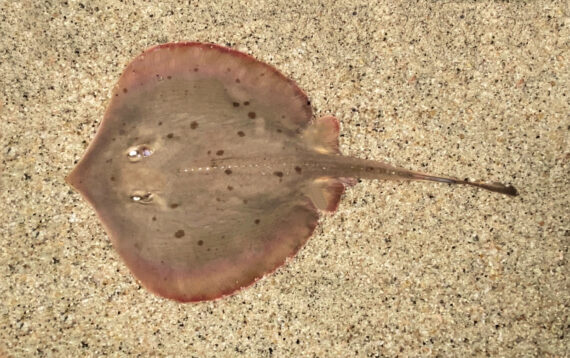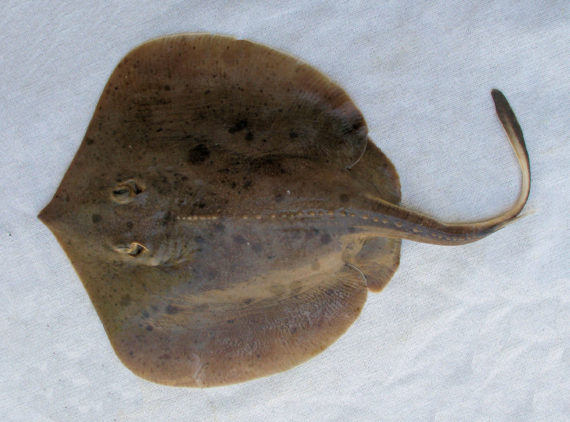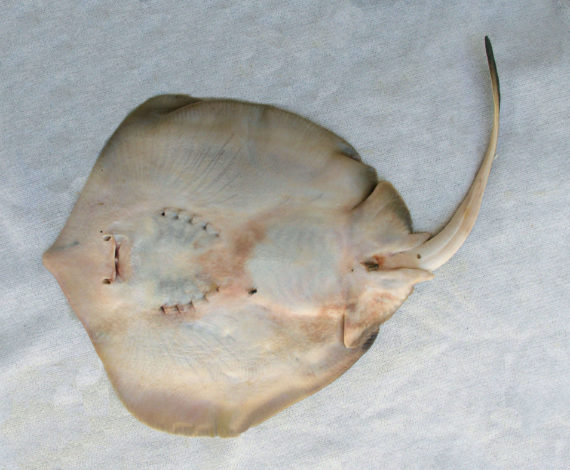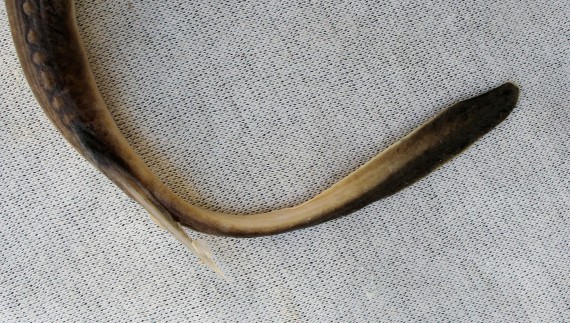Spiny Stingray, Urotrygon munda
 Spiny Stingray, Urotrygon munda. Fish caught from shore at Los Barriles, Baja California Sur, December 2021 2017. Total Length: 33 cm (13 inches). Disc: 19 cm (7.4 inches) x 20 cm (7.9 inches). Tail: 14 cm (5.7 inches). Catch, photograph and identification courtesy of Brad Murakami, Surrey, British Columbia, Canada.
Spiny Stingray, Urotrygon munda. Fish caught from shore at Los Barriles, Baja California Sur, December 2021 2017. Total Length: 33 cm (13 inches). Disc: 19 cm (7.4 inches) x 20 cm (7.9 inches). Tail: 14 cm (5.7 inches). Catch, photograph and identification courtesy of Brad Murakami, Surrey, British Columbia, Canada.


 Spiny Stingray, Urotrygon munda. Fish provided by the commercial fishermen of the greater Los Cabos area, Baja California Sur, April 2011. Total Length: 37 cm (15 inches). Disc: 21 cm (8.3 inches) x 22 cm (8.7 inches). Tail: 17 cm (6.7 inches).
Spiny Stingray, Urotrygon munda. Fish provided by the commercial fishermen of the greater Los Cabos area, Baja California Sur, April 2011. Total Length: 37 cm (15 inches). Disc: 21 cm (8.3 inches) x 22 cm (8.7 inches). Tail: 17 cm (6.7 inches).
The Spiny Stingray, Urotrygon munda, is a member of the American Round Stingray or Urotrygonidae Family, and is known in Mexico as raya redonda aspera. Globally, there are thirteen species in the genus Urotrygon, of which five are found in Mexican waters, all in the Pacific Ocean.
The Spiny Stingray has a rounded flat body with discs that are about equal in length and depth. They are a uniform light brown to yellowish brown color with tails having lighter edges. Their undersides are off white. Their discs have front margins that are straight to slightly convex. Their heads have a short weakly pointed snout with small eyes and spiracles that are on top of their heads and their mouths, nostrils, and gill slits are on their ventral side. Their slender tail is longer than the disc length and they have an elongated oval caudal fin. They feature one or two rows of 18 to 32 recurred spines along the mid-back that extend from mid-disc to the tail spine. They have 1 large venomous spine mid-tail. Their discs and tails are densely covered with relatively large, strong, and recurved denticles with star-like bases.
The Spiny Stingray is a demersal species that resides over and within coastal sandy and muddy bottoms at depths up to 79 m (260 feet). They are most abundant at depths less than 15 m (50 feet) and move to greater depths during cold-water episodes. They reach a maximum of 40 cm (16 inches) in length with maximum disc widths of 24 cm (9.4 inches). They seek food by stirring the bottom sediment with their pectoral fins to dislodge small crustaceans, small fish, mussels, and worms on which they feed. Reproduction occurs via internal fertilization with embryos developing via aplacental vivparity with a gestation period of 3 months. Their pups are born alive and resemble miniature adults that are independent at birth. The Spiny Stingray is poorly studied with very limited information available about their lifestyle and behavioral patterns including specific details on age, growth, longevity, movement patterns, diet, habitat use, and reproduction.
In Mexican waters the Spiny Stingray is a resident of the Pacific being present in all waters except they are absent from Magdalena Bay, Baja California Sur, northward along the central and northwest coasts of Baja.
The Spiny Stingray is not easily confused with any other species due to the abundance of large recurved spines and denticles on their disc and tail.
From a conservation perspective, the Spiny Stingray is currently classified as Data Deficient. They are a rare species seldom seen by humans. From a fishing perspective, they are only retained by subsistence fishermen and typically considered a “catch and release.”